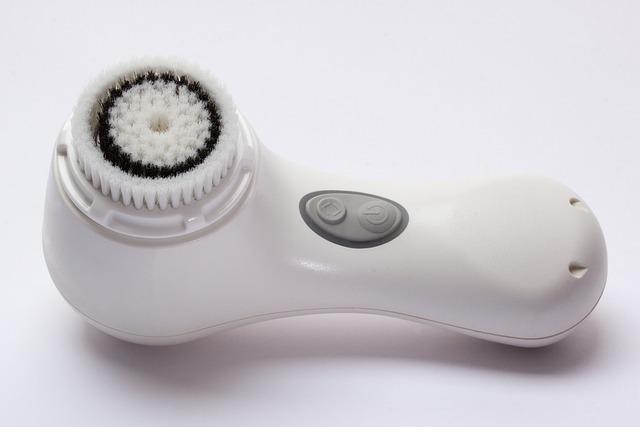In a world where screens have become our constant companions and our daily lives often resemble a marathon of sitting, our posture silently bears the weight of our modern habits. We’ve all experienced that familiar twinge—a reminder from our bodies that they crave a little more attention, a little more care. Imagine your spine as a loyal friend, always supporting you, yet often neglected amidst the hustle. What if, with a few simple changes, you could transform that nagging discomfort into a feeling of ease and strength? In this article, we will explore five compassionate ways to nurture your posture, alleviate pain, and rediscover the comfort that your body deserves. Let’s embark on this journey of mindful movement and gentle adjustments, creating a harmonious balance between our bodies and our busy lives.
Understanding the Root Causes of Poor Posture
It’s easy to overlook the subtle habits that gradually shape our daily posture. Slouching at a desk, cradling a phone between shoulder and ear, or even sinking into a couch after a long day—these small actions accumulate, leading to poor posture. But understanding the origins of these habits is crucial. Often, it’s a combination of lifestyle choices, work environments, and even emotional states that contribute. Stress, for example, can cause us to tense up, leading to hunching or slumping. A lack of awareness of body mechanics and ergonomics in our workspace further exacerbates the issue.
There are several root causes that contribute to poor posture:
- Muscle Imbalances: Overused or underused muscles can pull the body out of alignment.
- Prolonged Sitting: Extended periods spent seated can weaken core muscles and tighten hip flexors.
- Inadequate Physical Activity: A sedentary lifestyle fails to engage the muscles necessary for maintaining good posture.
- Improper Ergonomics: Poorly arranged workstations can force the body into awkward positions.
- Psychological Factors: Stress and fatigue often manifest physically, influencing our posture.
Addressing these factors with empathy and awareness can be the first step toward a more aligned and pain-free body.

Embracing Ergonomics in Your Daily Life
Incorporating ergonomics into your everyday routine can be a game-changer for your overall well-being. Whether you’re working from home or spending long hours at a desk, it’s crucial to prioritize comfort and health. Here are some simple yet effective ways to make a positive shift:
- Adjust Your Workspace: Ensure your chair supports your lower back and your feet are flat on the floor. The top of your computer screen should be at eye level to prevent neck strain.
- Mind Your Posture: Regularly check your posture. Keep your back straight, shoulders relaxed, and avoid slouching. An occasional reminder to yourself can prevent long-term issues.
- Take Breaks: Stand up, stretch, and walk around every hour. This not only relieves tension but also boosts circulation and energy levels.
- Use Ergonomic Accessories: Invest in tools like a supportive keyboard, a wrist rest, or an ergonomic mouse to reduce strain and enhance comfort.
- Stay Active: Incorporate exercises that strengthen your core and back muscles. Activities like yoga or pilates can significantly improve posture and flexibility.
Embrace these changes with empathy towards your body’s needs, and watch as your discomfort fades, making way for a healthier, more comfortable you.

Mindful Movement Techniques for Lasting Comfort
Incorporating mindful movement into your daily routine can transform the way you experience your body, creating a sense of ease and reducing discomfort. Start by embracing techniques that bring awareness to how you move throughout your day. Here are some practices to consider:
- Body Scanning: Take a moment to perform a mental scan of your body. Notice areas of tension and consciously release them. This simple practice can help realign your posture by making you aware of unconscious habits.
- Controlled Breathing: Pair your movements with deep, controlled breaths. Breathing not only helps in calming the mind but also ensures your body maintains a relaxed, natural alignment.
- Gentle Yoga: Incorporate gentle yoga stretches into your routine. Poses like the cat-cow stretch or the mountain pose can help in enhancing spinal alignment and reducing muscular tension.
- Mindful Walking: Walk with awareness, feeling each step from heel to toe. This practice can improve your gait and promote better posture, reducing stress on your joints.
- Progressive Relaxation: Systematically tense and relax different muscle groups. This technique can help in identifying areas of chronic tension and improve overall body awareness.
By integrating these mindful movement techniques into your daily life, you’ll not only nurture your body but also cultivate a lasting comfort that supports both your physical and emotional well-being.
Building Strength and Flexibility for a Pain-Free Future
In our quest for a pain-free future, understanding the symbiotic relationship between strength and flexibility is key. A strong, flexible body not only enhances your posture but also shields you from the aches and pains that come with daily activities. To foster this balance, consider incorporating exercises and practices that target both muscle groups and connective tissues. Here are some effective strategies to help you achieve this:
- Yoga and Pilates: These practices focus on core strength and flexibility, promoting a more aligned spine and improved posture.
- Dynamic Stretching: Engage in stretches that move through a range of motion, preparing your muscles and joints for physical activity.
- Strength Training: Incorporate exercises that build muscle strength, such as weightlifting or resistance band workouts, to support your skeletal structure.
- Mindful Movement: Pay attention to your body’s signals during movement and adjust your posture accordingly to prevent strain.
- Regular Breaks: If you have a sedentary lifestyle, ensure you take frequent breaks to stand, stretch, and move around.
By integrating these practices into your routine, you can create a foundation of strength and flexibility that not only enhances your posture but also contributes to a pain-free life.


